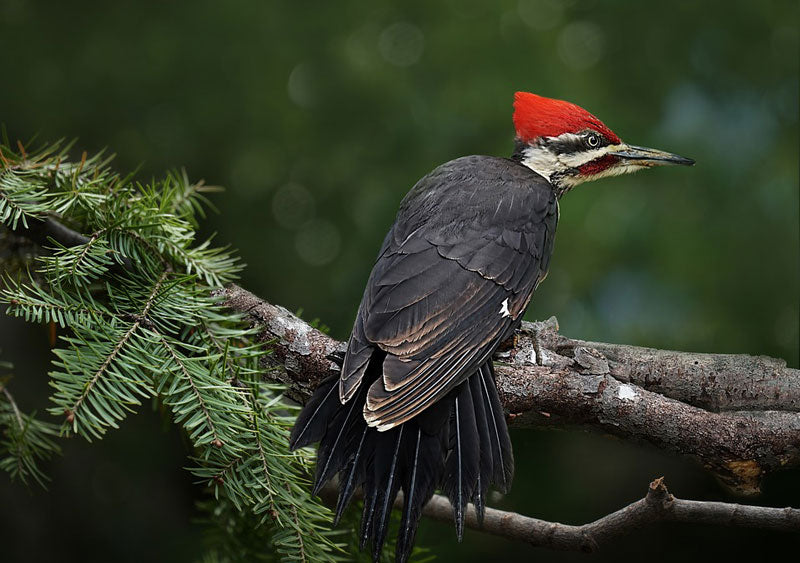Offer
Provide additional details about the offer you're running.
Provide additional details about the offer you're running.
Provide additional details about the offer you're running.

Unmistakable in many ways and easily one of our favourite suet visitors is the pileated woodpecker. Unmistakable in size, shape, appearance and sound, these large woodpeckers have the ability to incite excitement when spotted on or around a feeder, hammering away on a tree or while in flight.
Outside of their appearance, it is often easy to tell where a pileated woodpecker has spent some time working away at a tree in search of food. These large birds inflict a fair amount of damage on any tree they fancy to yield a satisfying breakfast, lunch or dinner which can often be spotted quite a way off.
Traditionally speaking, they will excavate rectangular-shaped holes inside of trees, which in some cases, can even cause the entire tree to topple over in time. That’s some serious pecking power!

Where to Find the Pileated Woodpecker
These non-migrants are quite widespread throughout the east, spanning much of Ontario, Quebec and the Canadian Maritimes and running down the entire eastern United States seaboard into Florida.
They reside in mature forest where they track down dead trees and downed logs and snags in search of insects. When it comes to backyards, these birds will often visit backyard bird feeders as well, especially for some delicious suet during the winter months.
Identification
These birds are majestic in appearance and are utterly unmistakable when spotted. As the largest woodpecker here in Ontario, they are nearly the size of a large crow and feature striking white stripes on their neck complemented with a red crest on top of their heads. Their necks are long and designed to absorb the constant hammering these birds use to search and acquire food.
During flight, they are identified by their white underwings, which are easy to spot and pair with that red head as they fly overhead.
Vocals
While their appearance is unmistakable, so too is their call. Their series of piping calls last for several seconds in length and are a quintessential element of the woods. Additionally, these birds will also let out smaller wuk, wuk-style calls in alarm and have been known to drum on trees and other structures throughout the year. Both sexes will partake in this drumming activity, usually as a form of mate attraction.
High Quality Blend